We proposed a new type of bitcoin withholding attack named block withholding delay (BWD). It is different from the traditional withholding attacks which always drop valid blocks. BWD attackers never discard blocks but they delay the submissions of blocks to the pool managers, resulting the pool failed in the mining competitions and loss of rewards. We analyzed the optimum strategy of a BWD attacker who split its computing power into two parts, one was utilized to launch BWD attacks on the victim pools, while the other part was used for solo mining. We present detailed quantitative analysis of the maximum incentive that an attacker can earn by carefully splitting its computing power, and demonstrated that the attacker can obtain higher incentives than its contribution to the network in different conditions. Furthermore, we proposed a countermeasure against BWD based on the interval type-2 Takagi-Sugeno-Kang fuzzy inference system (IT2-TSK-FIS). The principle is to modify the private payoff scheme of pools to increase the risk of losing revenues of the rogue miners who deliberately delay block submissions. The scheme dealing the uncertain cause of block delay using fuzzy inference, and it is so designed that it does not require modifications of public mining protocols or data structures of the bitcoin network, which makes it applicable in practical pools.
1.
Introduction
Let Fq be the finite field of q elements with characteristic p, where q=pr, p is a prime number. Let F∗q=Fq∖{0} and Z+ denote the set of positive integers. Let s∈Z+ and b∈Fq. Let f(x1,…,xs) be a diagonal polynomial over Fq of the following form
where ai∈F∗q, mi∈Z+, i=1,…,s. Denote by Nq(f=b) the number of Fq-rational points on the affine hypersurface f=b, namely,
In 1949, Hua and Vandiver [1] and Weil [2] independently obtained the formula of Nq(f=b) in terms of character sum as follows
where the sum is taken over all s multiplicative characters of Fq that satisfy ψmii=ε, ψi≠ε, i=1,…,s and ψ1⋯ψs=ε. Here ε is the trivial multiplicative character of Fq, and J0q(ψ1,…,ψs) is the Jacobi sum over Fq defined by
Though the explicit formula for Nq(f=b) are difficult to obtain in general, it has been studied extensively because of their theoretical importance as well as their applications in cryptology and coding theory; see[3,4,5,6,7,8,9]. In this paper, we use the Jacobi sums, Gauss sums and the results of quadratic form to deduce the formula of the number of Fq2-rational points on a class of hypersurfaces over Fq2 under certain conditions. The main result of this paper can be stated as
Theorem 1.1. Let q=2r with r∈Z+ and Fq2 be the finite field of q2 elements. Let f(X)=a1xm11+a2xm22+⋯+asxmss, g(Y)=y1y2+y3y4+⋯+yn−1yn+y2n−2t−1+… +y2n−3+y2n−1+bty2n−2t+⋯+b1y2n−2+b0y2n, and l(X,Y)=f(X)+g(Y), where ai,bj∈F∗q2, mi≠1, (mi,mk)=1, i≠k, mi|(q+1), mi∈Z+, 2|n, n>2, 0≤t≤n2−2, TrFq2/F2(bj)=1 for i,k=1,…,s and j=0,1,…,t. For h∈Fq2, we have
(1) If h=0, then
(2) If h∈F∗q2, then
Here,
2.
Prerequisites
To prove Theorem 1.1, we need the lemmas and theorems below which are related to the Jacobi sums and Gauss sums.
Definition 2.1. Let χ be an additive character and ψ a multiplicative character of Fq. The Gauss sum Gq(ψ,χ) in Fq is defined by
In particular, if χ is the canonical additive character, i.e., χ(x)=e2πiTrFq/Fp(x)/p where TrFq/Fp(y)=y+yp+⋯+ypr−1 is the absolute trace of y from Fq to Fp, we simply write Gq(ψ):=Gq(ψ,χ).
Let ψ be a multiplicative character of Fq which is defined for all nonzero elements of Fq. We extend the definition of ψ by setting ψ(0)=0 if ψ≠ε and ε(0)=1.
Definition 2.2. Let ψ1,…,ψs be s multiplicative characters of Fq. Then, Jq(ψ1,…,ψs) is the Jacobi sum over Fq defined by
The Jacobi sums Jq(ψ1,…,ψs) as well as the sums J0q(ψ1,…,ψs) can be evaluated easily in case some of the multiplicative characters ψi are trivial.
Lemma 2.3. ([10,Theorem 5.19,p. 206]) If the multiplicative characters ψ1,…,ψs of Fq are trivial, then
If some, but not all, of the ψi are trivial, then
Lemma 2.4. ([10,Theorem 5.20,p. 206]) If ψ1,…,ψs are multiplicative characters of Fq with ψs nontrivial, then
if ψ1⋯ψs is nontrivial and
if ψ1⋯ψs is trivial.
If all ψi are nontrivial, there exists an important connection between Jacobi sums and Gauss sums.
Lemma 2.5. ([10,Theorem 5.21,p. 207]) If ψ1,…,ψs are nontrivial multiplicative characters of Fq and χ is a nontrivial additive character of Fq, then
if ψ1⋯ψs is nontrivial and
if ψ1⋯ψs is trivial.
We turn to another special formula for Gauss sums which applies to a wider range of multiplicative characters but needs a restriction on the underlying field.
Lemma 2.6. ([10,Theorem 5.16,p. 202]) Let q be a prime power, let ψ be a nontrivial multiplicative character of Fq2 of order m dividing q+1. Then
For h∈Fq2, define v(h)=−1 if h∈F∗q2 and v(0)=q2−1. The property of the function v(h) will be used in the later proofs.
Lemma 2.7. ([10,Lemma 6.23,p. 281]) For any finite field Fq, we have
for any b∈Fq,
where the sum is over all c1,…,cm∈Fq with c1+⋯+cm=b.
The quadratic forms have been studied intensively. A quadratic form f in n indeterminates is called nondegenerate if f is not equivalent to a quadratic form in fewer than n indeterminates. For any finite field Fq, two quadratic forms f and g over Fq are called equivalent if f can be transformed into g by means of a nonsingular linear substitution of indeterminates.
Lemma 2.8. ([10,Theorem 6.30,p. 287]) Let f∈Fq[x1,…,xn], q even, be a nondegenerate quadratic form. If n is even, then f is either equivalent to
or to a quadratic form of the type
where a∈Fq satisfies TrFq/Fp(a)=1.
Lemma 2.9. ([10,Corollary 3.79,p. 127]) Let a∈Fq and let p be the characteristic of Fq, the trinomial xp−x−a is irreducible in Fq if and only if TrFq/Fp(a)≠0.
Lemma 2.10. ([10,Lemma 6.31,p. 288]) For even q, let a∈Fq with TrFq/Fp(a)=1 and b∈Fq. Then
Lemma 2.11. ([10,Theorem 6.32,p. 288]) Let Fq be a finite field with q even and let b∈Fq. Then for even n, the number of solutions of the equation
in Fnq is qn−1+v(b)q(n−2)/2. For even n and a∈Fq with TrFq/Fp(a)=1, the number of solutions of the equation
in Fnq is qn−1−v(b)q(n−2)/2.
Lemma 2.12. Let q=2r and h∈Fq2. Let g(Y)∈Fq2[y1,y2,…,yn] be a polynomial of the form
where bj∈F∗q2, 2|n, n>2, 0≤t≤n2−2, TrFq2/F2(bj)=1, j=0,1,…,t. Then
Proof. We provide two proofs here. The first proof is as follows. Let q1=q2. Then by Lemmas 2.7 and 2.10, the number of solutions of g(Y)=h in Fq2 can be deduced as
By Lamma 2.7 and (2.2), we have
Next we give the second proof. Note that if f and g are equivalent, then for any b∈Fq2 the equation f(x1,…,xn)=b and g(x1,…,xn)=b have the same number of solutions in Fq2. So we can get the number of solutions of g(Y)=h for h∈Fq2 by means of a nonsingular linear substitution of indeterminates.
Let k(X)∈Fq2[x1,x2,x3,x4] and k(X)=x1x2+x21+Ax22+x3x4+x23+Bx24, where TrFq2/F2(A)=TrFq2/F2(B)=1. We first show that k(x) is equivalent to x1x2+x3x4.
Let x3=y1+y3 and xi=yi for i≠3, then k(X) is equivalent to y1y2+y1y4+y3y4+Ay22+y23+By24.
Let y2=z2+z4 and yi=zi for i≠2, then k(X) is equivalent to z1z2+z3z4+Az22+z23+Az24+Bz24.
Let z1=α1+Aα2 and zi=αi for i≠1, then k(X) is equivalent to α1α2+α23+α3α4+(A+B)α24.
Since TrFq2/F2(A+B)=0, we have α23+α3α4+(A+B)α24 is reducible by Lemma 2.9. Then k(X) is equivalent to x1x2+x3x4. It follows that if t is odd, then g(Y) is equivalent to x1x2+x3x4+⋯+xn−1xn, and if t is even, then g(Y) is equivalent to x1x2+x3x4+⋯+xn−1xn+x2n−1+ax2n with TrFq2/F2(a)=1. By Lemma 2.11, we get the desired result. □
3.
Proof of Theorem 1.1
From (1.1), we know that the formula for the number of solutions of f(X)=0 over Fq2 is
where di=(mi,q2−1) and ψi is a multiplicative character of Fq2 of order di. Since mi|q+1, we have di=mi. Let H={(j1,…,js)∣1≤ji<mi, 1≤i≤s}. It follows that ψj11⋯ψjss is nontrivial for any (j1,…,js)∈H as (mi,mj)=1. By Lemma 2, we have J0q2(ψj11,…,ψjss)=0 and hence Nq2(f(X)=0)=q2(s−1).
Let Nq2(f(X)=c) denote the number of solutions of the equation f(X)=c over Fq2 with c∈F∗q2. Let V={(j1,…,js)|0≤ji<mi,1≤i≤s}. Then
Since ψi is a multiplicative character of Fq2 of order mi, we have
By Lemma 2.3,
By Lemma 2.5,
Since mi|q+1 and 2∤mi, by Lemma 2.6, we have
Then
It follows that
where
For a given h∈Fq2. We discuss the two cases according to whether h is zero or not.
Case 1: h=0. If f(X)=0, then g(Y)=0; if f(X)≠0, then g(Y)≠0. Then
By Lemma 2.12, (3.1) and (3.2), we have
Case 2: h∈F∗q2. If f(X)=h, then g(Y)=0; if f(X)=0, then g(Y)=h; if f(X)∉{0,h}, then g(Y)∉{0,h}. So we have
By Lemma 2.12, (3.1) and (3.4),
It follows that
By (3.3) and (3.5), we get the desired result. The proof of Theorem 1.1 is complete.□
4.
Corollary and examples
There is a direct corollary of Theorem 1.1 and we omit its proof.
Corollary 4.1. Under the conditions of Theorem 1.1, if a1=⋯=as=h∈F∗q2, then we have
where
Finally, we give two examples to conclude the paper.
Example 4.2. Let F210=⟨α⟩=F2[x]/(x10+x3+1) where α is a root of x10+x3+1. Suppose l(X,Y)=α33x31+x112+y23+α10y24+y1y2+y3y4. Clearly, TrF210/F2(α10)=1, m1=3, m2=11, s=2, n=4, t=0, a2=1. By Theorem 1.1, we have
Example 4.3. Let F212=⟨β⟩=F2[x]/(x12+x6+x4+x+1) where β is a root of x12+x6+x4+x+1. Suppose l(X,Y)=x51+x132+y23+β10y24+y1y2+y3y4. Clearly, TrF212/F2(β10)=1, m1=5, m2=13, s=2, n=4, t=0, a1=a2=1. By Corollary 1, we have
Acknowledgments
This work was jointly supported by the Natural Science Foundation of Fujian Province, China under Grant No. 2022J02046, Fujian Key Laboratory of Granular Computing and Applications (Minnan Normal University), Institute of Meteorological Big Data-Digital Fujian and Fujian Key Laboratory of Data Science and Statistics.
Conflict of interest
The authors declare there is no conflicts of interest.










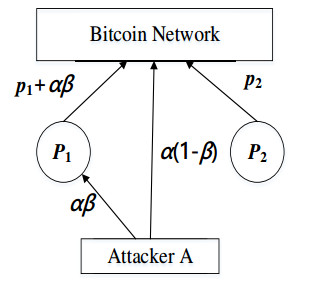
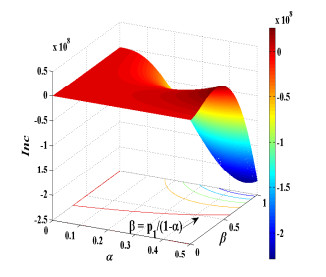
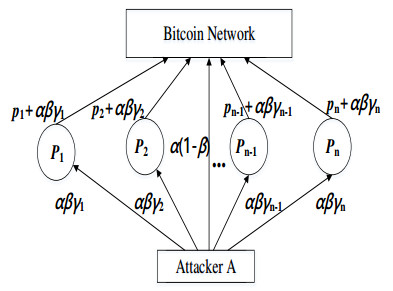
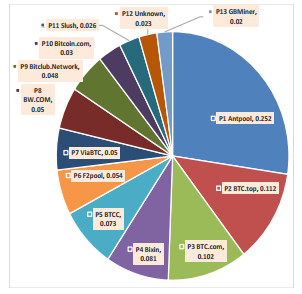
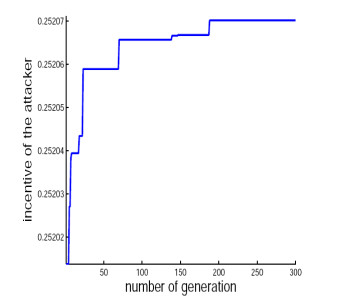
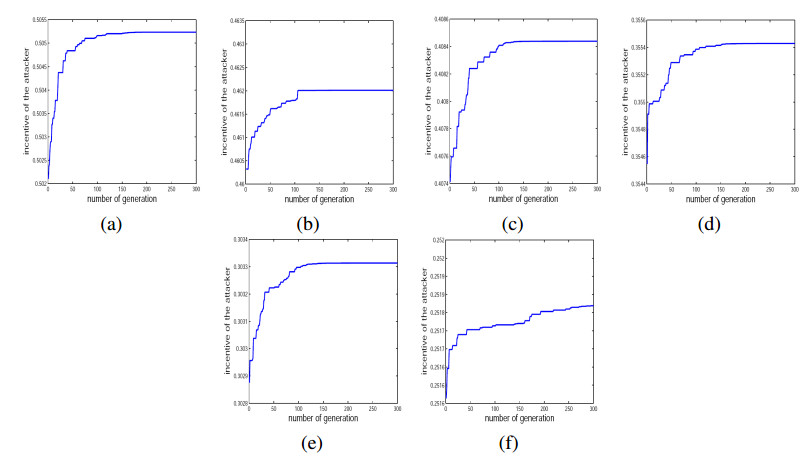



 DownLoad:
DownLoad: